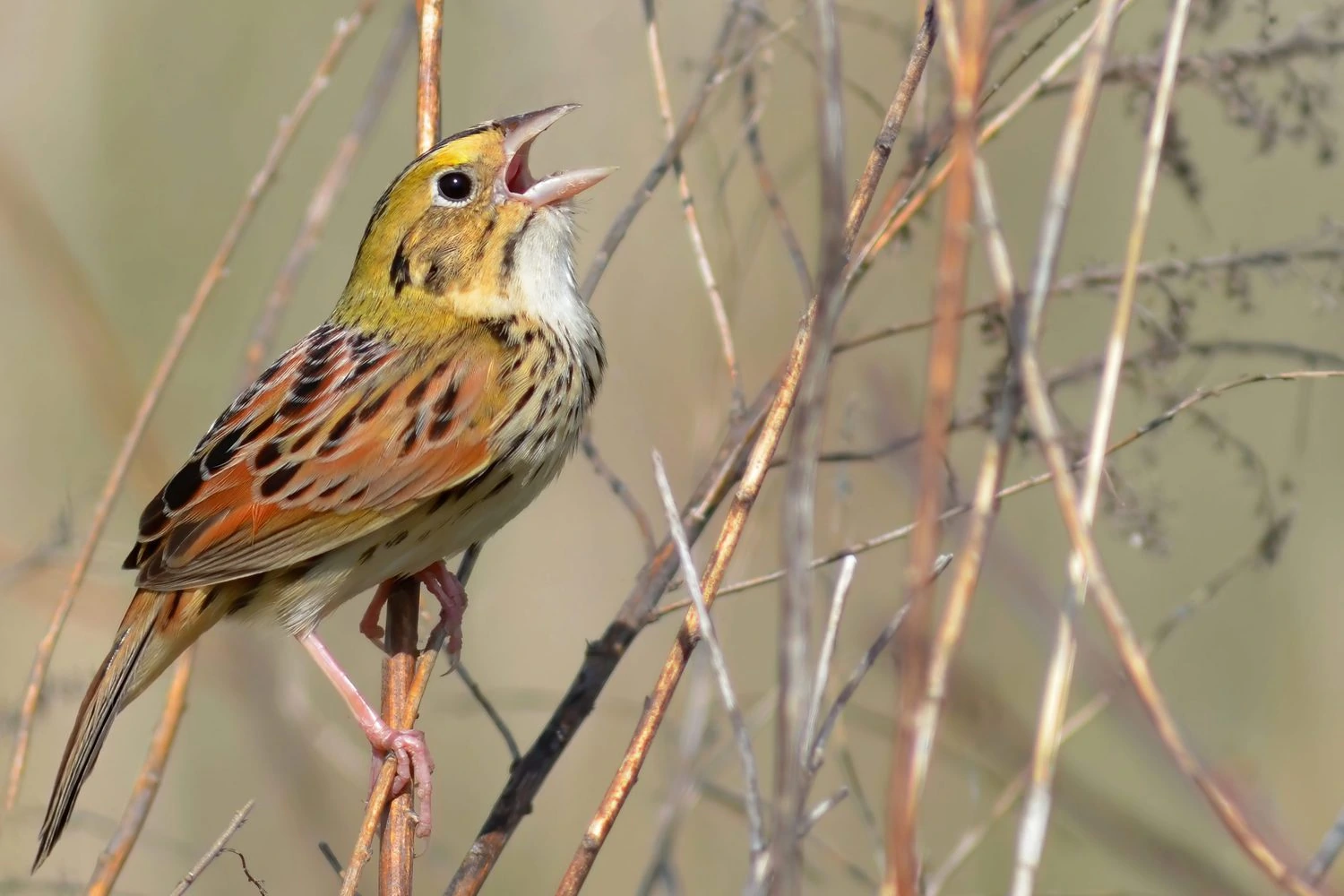Sparrows’ physical properties make them ideal at disguising in their natural habitat. Their cheeks are greenish, and their chests, bellies, and backs are reddish, with dark streaks on their cheeks.
Even juveniles appear to be the same, but their bellies are paler and they have fewer streaks than males. It’s difficult to tell the difference between guys and femen.
- Centronyx henslowi
- Length: 12 – 13 cm (4.75 – 5.25 in)
- Weight: 14 g (0.5 oz)
- Wingspan: 18 – 19 cm (7 – 7.5 in)
Range
Sparrows breed in the northeastern United States, and during the winter, they migrate to the southeastern United States.
Habitat And Diet
In wet, weedy, and thick grasslands, you may find Henslow’s Sparrows. Yet, their native environment is fast diminishing, and they are presently scouring abandoned agricultural fields, meadows, and wherever they can locate thick, high grasslands.
Sparrows prefer to stay hidden and forage at the bottom of grass stalks, therefore they are a difficult sight to see. Sedge, ragweed, and smartweed seeds are among the foods they consume. In the summer, they feast on grasshoppers and caterpillars, among other insects. Berries are also a favorite delicacy for them.
Nests
Henslow’s Sparrow nests are built from grass and wildflowers placed in small hollows or at the base of thick clumps of grass. The female incubates three to five eggs for eleven days after laying them. The young take ten days to fledge, and their parents continue to look after them for a brief time even after they leave the nest.
Fun Fact:
Sparrows prefer to flee danger by running through thick grass rather than flying.
